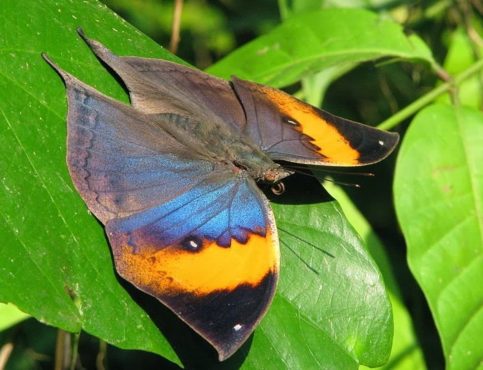10 Most Beautiful Butterflies In The World
1. Dead Leaf Butterfly
The dead leaf butterfly is an outstanding example of amazing animal camouflage. The underpart of it’s wings are in dark and brown. The irregular patterns and veins on the wings make resemblance with dead leaf. Unlike underpart the upperpart of dead leaf butterfly’s wings appears in number of brilliant colors including blue, brown, white and orange. They also called as Indian leaf butterfly, native to tropical forest across Asia.

The resemblance of their wings with dead or fallen leaf help them to easily hide from potential predators. They never fly too much or faster. They usually rest in a place for longtime from where they find food. The leaf butterflies only move from the position when they threatened. The camouflage tactic itself help the dead leaf butterflies to settle in a place for long time. The nectar of flowers and fallen fruits are main items within the diet of dead leaf butterflies.
The butterfly wings are shaped like a leaf when in the closed position. When the wings are closed, only the cryptic underside markings are visible, which consists of irregular patterns and striations in many shades of biscuit, buff, browns, yellow, and black. The veins are darkened and resemble the veins of a leaf. The resemblance to a dried leaf is extremely realistic and gives the genus its common name, viz oakleaf or dead leaf.
When the wings are open, the forewing exhibits a black apex, an orange discal band and a deep blue base. There are two white oculi, one along the margin of the apical black band, and the other bordering the orange and deep blue areas. The hindwing is more uniformly blue but diffused with brown patches along the termen.
Male and female butterflies are similar except that the female is generally larger and has the apex of the forewing protrude to form a longer point. Females also tend to be more reddish on the underside and the yellow mottled markings tend to be paler. The butterfly exhibits polyphenism, i.e. there are specific dry-season and wet-season forms which differ in colouration and size; the WSF tends to be smaller.